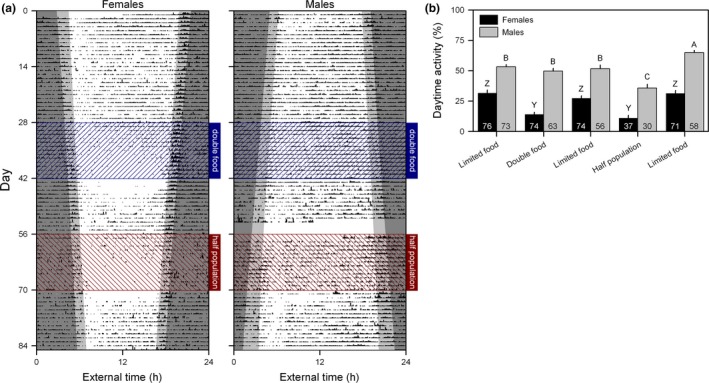Figure 2.

Diurnality in energetically challenged mice is reversed by increased food availability. (a) Representative actograms showing the timing of feeder visits of a female and a male population of mice housed in outdoor enclosures. Mice were maintained under a baseline condition of energy scarcity (~ 50% of ad libitum food intake) with food being delivered through an automated feeding system throughout day and night. Food availability was increased experimentally by doubling the delivered food amount or removing half the mice from a population. Twilight (between sunrise/sunset and nautical twilight) is indicated by the light grey background. Dark grey and white backgrounds represent night and day, respectively. Day 1 is 6 August 2014 for females and 12 March 2015 for males. (b) The percentage of feeder visits occurring during daytime was significantly reduced by increased food availability in both female and male mice. In both females and males, bars indicated by different letters are significantly different. Sample size is indicated at the base of each bar.
